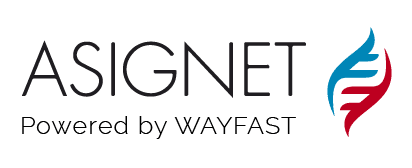The IT Industry nowadays holds the potential to become one of the most lucrative industries in the world since it massively contributes to global revenue generation and also strongly impacts economic structure at a global level. Proficient workforce availability, affluence of raw material sources, financial stability, and suitable industry environment has been strengthening the IT Asset Management (ITAM) market’s support points in the global market structure.
Due to the high consumption of the ITAM software in the worldwide market, the current demand for the main product is relatively large in the industry. With consideration of the global economic situation, the ITAM market growth has been highly increased from the last decades and it will also grow rapidly in forthcoming years.
IT Asset Management has typically been viewed as an operational solution that enables an enterprise to properly document IT assets along with associated contracts, license agreements, and disposal information. However, in recent years, this has become an important part of an overall security strategy for many agencies after several highly publicized security breaches.
Incorporating Robotic Process Automation (RPA) with Artificial Intelligence (AI) into next-generation ITAM solutions will also help organizations in the IT Industry that are struggling to meet IT asset management objectives due to limited resources.
Which are the changes the IT industry will see after incorporating RPA and AI into IT asset management?
1
IT asset audits ensure organizations are compliant with software license agreements and regulations. When software vendors or third-parties audit companies to ensure license agreements are followed, the results are typically not favorable for the company, especially when IT asset management best practices have not been followed.
To ensure compliance, organizations should regularly perform self-audits, but this requires significant time and resources. Without comprehensive IT asset management, they will struggle to conduct self-audits with results accurate enough to verify or challenge results produced by third-party auditors. Too often, enterprises are left with no choice but to rely on the reports produced by the outside auditors.
Next-generation IT asset management solutions will minimize or eliminate manual, redundant tasks required for self-audits by incorporating RPA technology. As a result, internal auditors can spend more time focusing on results instead of operational tasks. Auditors will evolve into analysts, interpreting results and providing insights to the agency.
2
Automating service fulfillment processes is much more challenging when a service request includes IT asset requests for software or hardware, which typically requires additional legal processes to handle approvals, signatures, contract negotiations, license modifications, and clarifications. Tasks associated with these processes often contain unstructured data or images that are embedded in email correspondence, voicemail or chatbots.
RPA processes can feed this unstructured, raw data to AI components that can interpret the unstructured data and return meaningful results back to the RPA engine, which then links those results to the appropriate IT asset fulfillment process.
With unstructured data management capabilities, RPA evolves from a simple task-automation tool into an intelligent process automation solution. This model is already gaining traction. Gartner predicts “a renaissance of the existing market offerings — a shift from task-centric to more process-level automation and eventually to process orchestration.”
RPA and AI will enhance service and asset requests by automating processes from start to finish, facilitating requests from chatbots, email, and voicemail. As a result, companies can improve customer experience with faster service-request fulfillment along with accurate status updates.
3
Comprehensive IT asset management solutions are heavily dependent on both manual and automated processes. These processes ensure that IT assets are properly discovered, managed, secured and supported across every department within an agency.
To ensure accuracy and to meet the demands of a digital transformation, enterprises need advanced automation tools to eliminate redundant manual tasks associated with managing IT assets but still support legacy applications and operating systems.
RPA will expand IT asset management capabilities by facilitating automation that spans beyond traditional back-end workflows. By observing employee interactions with the graphical interface on user computers, RPA can create action lists for virtual robots that will do the repetitive, non-value-added tasks associated with IT asset management that are currently performed by human analysts.
This will free up staff resources for enterprises, allowing them to focus on strategic actions and/or to reassign employees to projects or tasks where they can add more value.
The need for ITAM/ITEM is critical functionality in picking your TEM Program
Today’s telecom and IT departments face an influx of cloud, virtualization, mergers and acquisitions, software audits, compliance, security, upgrades and a host of new initiatives such as BYOD (Bring Your Own Device). These new challenges only exacerbate current complexities in managing company laptops, desktops, servers, operating systems, network hardware, and now mobile devices and tablets. The challenge is knowing what TEM companies can really deliver around ITAM/ITEM.
Some facts: more than “61 percent of companies were audited within the last 18 months, according to a Flexera survey and more than 17 percent of them were audited more than three times within that same 18-month period”.
The costs associated with audits mean that ITAM can no longer be taken lightly as an internal discipline. ITAM’s deliverables are also critical to security, architecture, procurement and service management. Therefore every enterprise must demand a robust proof of concept that separates the marketing hype from real abilities.
Contact us for more information about our IT Asset Management Solution.






